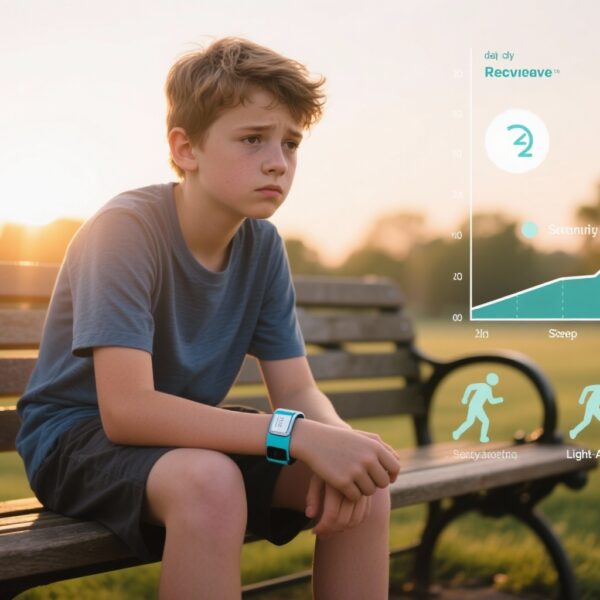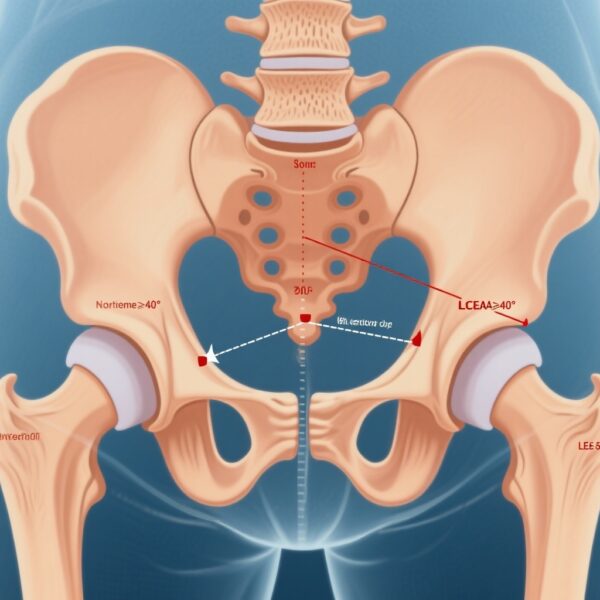Highlights
– In 83 children and adolescents with type 1 diabetes followed for 2 years, higher sedentary time (at the expense of sleep or activity) was associated with higher HbA1c and mean interstitial glucose.
– Reallocating daily time toward sleep or MVPA (and away from sedentary behaviour) was associated with clinically meaningful reductions in HbA1c and interstitial glucose.
– Findings were derived using 24 h compositional data analysis, preserving the relative nature of time-use data and supporting a whole‑day movement approach in clinical counselling.
Background
Type 1 diabetes (T1D) in childhood and adolescence remains a clinical challenge because glycaemic targets can be difficult to achieve during periods of growth, puberty and changing behaviours. Glycaemic stability—captured by HbA1c and continuous glucose monitoring (CGM) metrics such as mean interstitial glucose and time in range—predicts microvascular outcomes and quality of life. Lifestyle behaviours that occupy the 24‑hour day—sleep, sedentary time and physical activity—interact physiologically with glucose metabolism and insulin responsiveness, but the relative balance of these behaviours has been underexamined in youth with T1D.
Traditional analyses that treat behaviours independently risk misrepresenting effects because daily time is finite: increasing time in one behaviour necessarily decreases another. Compositional data analysis (CoDA) respects this constraint and has been increasingly used to study associations between 24 h movement profiles and health outcomes in children and adults. The Diactive‑1 cohort study (Muñoz‑Pardeza et al., Diabetologia 2025) applied CoDA to investigate how reallocations of time among sleep, sedentary behaviour, light physical activity (LPA) and moderate‑to‑vigorous physical activity (MVPA) relate to HbA1c and interstitial glucose in young people with T1D over two years.
Study design
Population: 83 children and adolescents aged 6–18 years with established T1D (45% female) participating in the Diactive‑1 cohort, followed longitudinally for 2 years. Baseline mean HbA1c was 57.54 ± 9.22 mmol/mol (7.4 ± 0.8%).
Exposure measurement: Triaxial accelerometers were worn continuously for nine days to capture device‑measured 24 h movement behaviours, classified into sleep, sedentary time, light physical activity and MVPA. Time-use was treated as compositional data (i.e., parts summing to 24 h).
Outcome measurement: HbA1c values were extracted from medical records; interstitial glucose was measured by CGM devices and summarized as median glucose (reported median 9.37 mmol/L [IQR 8.68–10.31]).
Analytic approach: Linear mixed models with compositional covariates quantified associations between reallocations of daily time among behaviours and outcomes across the follow‑up period. Results are reported as unstandardised beta coefficients (B) for reallocation contrasts and standardised beta coefficients (β) to indicate effect size.
Key findings
The study reports three principal findings concerning reallocations of daily time and their associations with HbA1c and interstitial glucose.
1) More sedentary time (at expense of sleep or activity) associated with worse glycaemic measures
When sedentary behaviour increased at the expense of sleep, LPA or MVPA, HbA1c increased substantially: B = 14.077 mmol/mol (95% CI 4.244 to 23.956); standardised β = 0.368. Interstitial glucose also rose with greater sedentary time (B = 1.988 mmol/L; 95% CI 0.153 to 3.880; β = 0.261). These point estimates indicate that replacing sleep or activity with sedentary time is linked to clinically relevant deterioration in both chronic (HbA1c) and short‑term glycaemia.
2) More sleep (at expense of other behaviours) associated with lower HbA1c
Increasing sleep time—while reducing sedentary time, LPA or MVPA—was associated with lower HbA1c (B = −12.712 mmol/mol; 95% CI −25.204 to −0.520; β = −0.197). This suggests that insufficient sleep may contribute to higher chronic glycaemia in young people with T1D, and that prioritising sleep can be beneficial for metabolic control.
3) More MVPA (at expense of sedentary time) associated with reductions in both HbA1c and interstitial glucose
Reallocating daily time to MVPA from sedentary behaviour was associated with lower interstitial glucose (B = −1.580 mmol/L; 95% CI −2.800 to −0.388; β = −0.283) and lower HbA1c (B = −9.361 mmol/mol; 95% CI −15.856 to −2.881; β = −0.330). Standardised betas across reported contrasts indicate small‑to‑moderate effect sizes, but the absolute HbA1c changes (approximately 0.9% HbA1c reduction if we convert ~9 mmol/mol) are clinically meaningful if causal.
Interpreting the magnitude and clinical relevance
The magnitudes reported are notable: changes in HbA1c on the order of ~9–14 mmol/mol correspond roughly to 0.8–1.3% HbA1c, which would be significant in paediatric diabetes care. The interstitial glucose changes (≈1–2 mmol/L) could reflect meaningful shifts in mean glucose and time in range. However, these associations represent observational reallocations within the statistical model rather than results of randomized behavioural interventions; causality cannot be assumed.
Expert commentary and biological plausibility
Physiological rationale supports the observed associations. MVPA increases skeletal muscle glucose uptake and insulin sensitivity, acutely lowering glucose and improving longer‑term glycaemic control when performed regularly. Conversely, prolonged sedentary time reduces skeletal muscle contractile activity and may worsen insulin sensitivity. Sleep deprivation and poor sleep quality heighten counter‑regulatory hormones (e.g., cortisol, growth hormone) and impair insulin sensitivity, contributing to higher fasting and mean glucose.
The use of compositional analysis is a strength because it captures the trade‑offs inherent to 24‑hour time use and produces interpretable reallocation estimates (e.g., shifting 30 minutes from sedentary time to MVPA). This analytic approach aligns with recent movement behaviour guidance that emphasizes a 24‑hour perspective rather than isolated behaviours (WHO 2020).
Limitations and generalisability
Key limitations should temper interpretation:
- Sample size and cohort selection: The study included 83 participants from a single cohort. While longitudinal follow‑up strengthens inference about temporal associations, the modest sample limits power for subgroup analyses (e.g., by pubertal status, insulin regimen) and external validity across diverse populations.
- Observational design: Despite repeated measures, residual confounding (dietary intake, insulin dosing and timing, hypoglycaemia episodes, socio‑economic factors) could influence associations.
- Measurement constraints: Accelerometers infer behaviours from movement signatures and may misclassify certain activities (e.g., cycling, resistance training) and sleep without polysomnography. Device wear compliance and algorithms for sleep detection can affect estimates of sleep duration and fragmentation.
- Heterogeneity in diabetes management: Insulin modality (pump vs multiple daily injections), CGM type and clinical support were not fully described in the summary and may moderate effects of activity and sleep on glucose.
Clinical implications
For clinicians managing paediatric T1D, these data reinforce established recommendations and expand them by emphasizing whole‑day time balance:
- Encourage regular MVPA consistent with WHO and national guidelines (target ~60 min/day of MVPA for children/adolescents when feasible), while providing individualized education on insulin adjustments, carbohydrate intake and CGM use around exercise to mitigate hypoglycaemia risk (Riddell et al., Lancet Diabetes Endocrinol 2017; ADA/ISPAD guidance).
- Address sedentary behaviour explicitly in counselling. Reducing prolonged sitting (e.g., promoting short activity breaks during screen time or class) could contribute to better glycaemic control independent of total MVPA.
- Prioritise sleep health. Screening for insufficient or irregular sleep and implementing sleep hygiene interventions may offer another modifiable pathway to improve HbA1c and mean glucose.
- Use CGM data pragmatically. Continuous glucose metrics provide actionable feedback about the glycaemic impact of behaviour changes and can guide iterative adjustments to insulin and lifestyle plans (Battelino et al., Diabetes Care 2019 consensus on CGM metrics).
Research gaps and future directions
Important next steps include:
- Randomized trials testing interventions that reallocate daily time (e.g., programmes that reduce sedentary time or increase sleep/MVPA) to assess causality and evaluate impact on HbA1c, CGM metrics and patient‑reported outcomes.
- Larger, diverse cohorts to examine effect modification by age, sex, puberty, insulin regimen and socioeconomic factors, and to quantify minimal clinically important changes for compositional reallocations.
- Domain‑specific analyses to determine whether types of MVPA (aerobic vs resistance), timing of activity relative to insulin and meals, and sleep quality produce differential glycaemic effects.
- Integration of wearable and behavioural data with insulin dosing logs and dietary intake to model mechanistic pathways.
Conclusion
The Diactive‑1 compositional analysis provides longitudinal evidence that, in children and adolescents with T1D, the 24‑hour balance of movement behaviours matters: more sedentary time is associated with worse glycaemic measures, while greater sleep and MVPA (relative to sedentary time) are associated with better metabolic stability. These findings argue for adopting a 24‑hour movement framework in clinical counselling and for trials that test whether structured reallocations of time can produce sustained glycaemic improvements.
Funding and clinicaltrials.gov
The original article includes funding and acknowledgement details (Muñoz‑Pardeza et al., Diabetologia 2025). ClinicalTrials.gov registration details, if applicable to the Diactive‑1 cohort, should be consulted in the full manuscript for trial identifiers and funding sources.
References
1. Muñoz‑Pardeza J, López‑Gil JF, Hormazábal‑Aguayo I, Huerta‑Uribe N, Ezzatvar Y, García‑Hermoso A. Compositional analysis of the association between 24 h movement behaviours, HbA1c and interstitial glucose in children and adolescents with type 1 diabetes mellitus: a two‑year longitudinal analysis of the Diactive‑1 cohort study. Diabetologia. 2025 Oct;68(10):2126–2138. doi:10.1007/s00125-025-06496-2.
2. World Health Organization. WHO Guidelines on Physical Activity and Sedentary Behaviour. Geneva: WHO; 2020.
3. Battelino T, Danne T, Bergenstal RM, et al. Clinical targets for continuous glucose monitoring data interpretation: recommendations from the International Consensus on Time in Range. Diabetes Care. 2019 Aug;42(8):1593–1603.
4. Riddell MC, Gallen IW, Smart CE, et al. Exercise management in type 1 diabetes: a consensus statement. Lancet Diabetes Endocrinol. 2017 May;5(5):377–390.
5. Dumuid D, Olds TS, Lewis LK, et al. Health implications of 24-hour time use patterns: a compositional data analysis. PLoS One. 2017;12(7):e0181230. (Illustrative methodological work using compositional data analysis for time‑use data.)
6. American Diabetes Association. 6. Glycemic Targets: Standards of Medical Care in Diabetes—2024. Diabetes Care. 2024;47(Suppl 1):S50–S63.
AI thumbnail prompt
An adolescent wearing a soft silicone continuous glucose monitor on the arm and a wrist accelerometer, sitting at a kitchen table with a soccer ball and a book; warm, clinical environment with natural light; emphasis on movement, sleep and glucose monitoring; semi‑realistic, high resolution.



